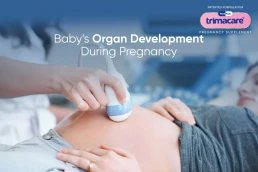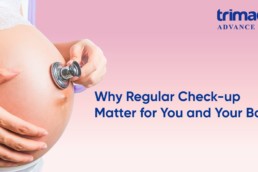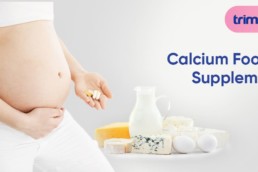The baby’s journey from the single cell to the time of birth is an amazing tale of growth and development. The sheer marvel that physiology is can be appreciated through knowing about embryonic development.
After fertilization of the egg and the sperm, the genetic makeup of the baby has been decided. The fertilized egg then divides into more cells over the next few days, travels through the fallopian tubes (Tubes that connect ovaries to the uterus) and implants itself into the uterine wall. The placenta between the mother and the growing embryo also starts to form.
The growth and development of the baby from the single-celled stage consists of the Germinal Stage, Gastrulation, Neurulation, Development of Organs and Organ Systems, and Development of physical features.
Development of Organs and Organ Systems
The process of development of Organs and Organ systems is referred to as Organogenesis. During the Gastrulation stage, three primary “germ layers”, are the ectoderm, endoderm, and mesoderm. Tissues, organs, and organ systems are developed from these germ layers.
The cells of these layers proliferate, migrate, reaggregate, and differentiate into various tissues to form organs.
Trimester 1
In the initial days of the pregnancy when fertilization occurs, the fertilized egg differentiates and divides and implants in the uterine wall. The placenta begins to form. The face, eyes, nose, mouth, and All major organs are formed in this trimester and continue to develop during the pregnancy. Nutrition is of primary importance here, along with preventing exposure to any toxic substances. Folic Acid and B vitamins are of crucial importance. During this trimester the formation of the baby’s internal structures is taking place which would continue to grow and develop over the next development, and into the child’s adulthood, so giving nutrition, lifestyle, habits, and mental health a lot of importance during this trimester is very important.
Trimester 2
The foetus grows more than double in this trimester, and the movements of the foetus can be felt by the mother as the foetus grows. Hearing also starts to develop during this trimester.
Trimester 3
Eyelashes and taste buds develop during this trimester, and most major development of organs completes. The fetus gains about half a pound a week and the mother’s internal organs adjust to allow the baby to grow, and the baby turns heads down for the delivery. The bones of the baby harden but the skull is flexible to allow squeezing through the birth canal during the process of delivery.
Take Away
The development of organs of a baby takes a well-defined path while in the uterus. To monitor that everything is developing as per the expectations of the gynecologist, you may be required to go for routine check-ups and ultrasounds. It is important to be regular to your gynecology appointments as that would help rule out any complications that could arise during the trimesters. As you might have noticed, 1st Trimester is extremely crucial for determining the baby’s health, and it is a period during which initially people don’t even know they’re pregnant. Hence, if you’re trying to conceive, it is important that you not only have a nutrient-dense diet, healthy habits, and a good lifestyle but also talk to your doctor about prenatal vitamins and pregnancy supplements so that you have enough stores of nutrients in your body. If you prioritize your health during pregnancy, your baby’s health and development can reach their full potential.
Frequently Asked Questions:
1. How does the development of organs occur in a fetus during pregnancy?
Organogenesis, the process by which a fetus develops its organs, begins around the third week of pregnancy. During this time, cells in the undeveloped organism duplicate and separate into explicit sorts of cells to shape different organs, like the heart, lungs, liver, and kidneys.
2. When does bone development start in a fetus during pregnancy?
The sixth week of pregnancy is typically when a fetus begins to develop its bones. At first, the skeleton comprises of delicate ligament, which bit by bit solidifies, or solidifies, into bone tissue. This interaction go on all through pregnancy and into youth.
3. How do tissues develop in a fetus during pregnancy?
Various types of tissue, such as muscle, nerve, connective, and epithelial tissue, are formed during tissue development in a fetus through the differentiation and specialization of cells. Cells migrate and organize to form various tissue structures, beginning in the embryonic stage and continuing throughout pregnancy.
4. What factors influence the development of organs, bones, and tissues in a fetus during pregnancy?
A foetus’s development of organs, bones, and tissues is influenced by genetic and environmental factors in combination. Hereditary elements decide the fundamental plan for improvement, while natural factors like sustenance, openness to poisons, and maternal wellbeing can influence the development and separation of cells.
5. Are there any specific milestones in the development of organs, bones, and tissues during pregnancy?
Yes, during pregnancy, specific developmental milestones occur for organs, bones, and tissues. For instance, toward the finish of the primary trimester, most significant organs have framed, in spite of the fact that they proceed to develop and develop all through pregnancy. Bone improvement advances consistently, with hardening of the skeleton happening slowly. Tissue improvement follows a comparative example, with various sorts of tissue framing at explicit phases of fetal turn of events.
A Certified Nutritionist with a rich healthcare background in health journalism, the author has immense experience in curating reader-friendly, engaging, and informative healthcare blogs to empower readers to make informed pregnancy-related decisions.












